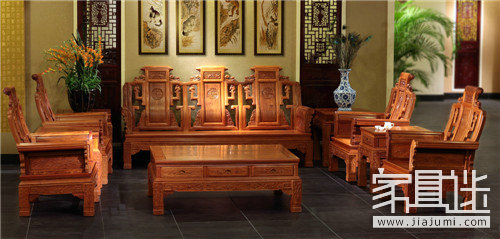When selecting wood for your project, it's important to follow certain key principles to ensure both quality and aesthetic appeal. Here's a detailed guide to help you make the right choices:

1. Wood Types
Wood types vary significantly in quality, durability, and price. Choosing the right type depends on your interior design style, the purpose of the furniture, and the overall decor level. For example, if you're going for a luxurious look, premium woods like teak or rosewood may be more suitable. On the other hand, for more budget-friendly options, softwoods like pine or spruce can work well.
Commonly Used Wood Types Include:
The first category includes softwoods such as Korean pine, Scots pine, spruce, and poplar. These are typically more affordable and commonly used for general construction and basic furniture.
The second category consists of hardwoods like yellow pine, eucalyptus, nanmu, ash, teak, rosewood, oak, cherry, and pear. These are often preferred for high-quality furniture due to their durability and attractive grain patterns.
2. Wood Texture
The texture of wood refers to the visual pattern formed by the arrangement of cells on the cut surface. Different tree species and cutting methods produce various textures. For instance, teak usually has a straight, even grain, while ash has a more variable pattern that requires careful matching when assembling pieces.
Some woods, like burl or color wood, have unique textures such as bird’s eye, swirls, or grape-like patterns, which can add character to your design. The way the wood is cut also affects the appearance—longitudinal cuts create straight lines, while radial cuts produce wavy or curved patterns. Rotary cutting results in continuous, flowing designs. Understanding these effects helps you choose wood that enhances the visual appeal of your space.
Related Reading: How to distinguish true and false mahogany by texture
3. Wood Color
The natural color of wood plays a significant role in the overall ambiance of an interior. Light-colored woods like maple or birch create a bright, airy feel, while darker woods like red sandalwood or walnut give a more sophisticated and formal look. It's important to consider how the color will interact with other elements in the room, such as paint, flooring, and lighting.
4. Wood Defects
Wood defects include things like discoloration, rot, insect damage, cracks, warping, and oil pockets. These imperfections can affect both the structural integrity and the visual appeal of the wood. When selecting wood, it's crucial to inspect it carefully and avoid pieces with major flaws that could compromise the final result.
5. Board Thickness
The thickness of the board typically ranges from 12mm to 18mm, though thinner options like 3-ply or 5-ply boards are also available. While thicker boards offer more strength, they aren’t always the best choice. Thinner boards can be more cost-effective and allow for better use of materials. However, boards thinner than 8mm may lack durability and can be too flexible, making installation more challenging. Always choose a thickness that balances aesthetics, function, and practicality.
Pastry And Vegetable Processing Machines
With an experience of over 30 years, Helper has designed and manufactured full series of pasta and vegetable processing machines, like bakery industrial dough mixer, automatic fresh and cooked noodle production line, vegetable cutting machine, slicer and dicer, automatic dumpling machine/dumpling machines, sesame mill, pancake forming machine etc. A pasta branch company was estblished with the development the business, owning a group of talented technical people, skilled production workers, and a professional sales and after sales service team. Many famous companies such as Dali Group, Panpan Group, Wanchai Ferry, Sinian Group, and so on have chose Helper as their strategic supplier and partner.
Pastry Processing Machines,Food Packaging Machines,Vegetable Processing Machines,Noodle Production Line,Dumpling Machines
Helper Machinery Group Co., Ltd. , https://www.ihelpergroup.com